On July 23, 2025, a devastating landslide in Mumbai’s Bhandup (West), specifically in the Khindipada area near Sai Niketan CHS, caused the collapse of a 50-foot retaining wall, toppling five houses. Triggered by heavy rainfall exceeding 100 mm in 48 hours, this incident underscores Mumbai’s vulnerability to monsoon-related disasters.
This article expands on the event, providing detailed insights into the current rain forecast, rain-related fatalities in 2025, the economic cost of rain disasters, government agencies involved, their mitigation efforts, Mumbai’s population, income and wealth distribution, home ownership versus rental statistics, the city’s monthly market size, and its top business sectors.
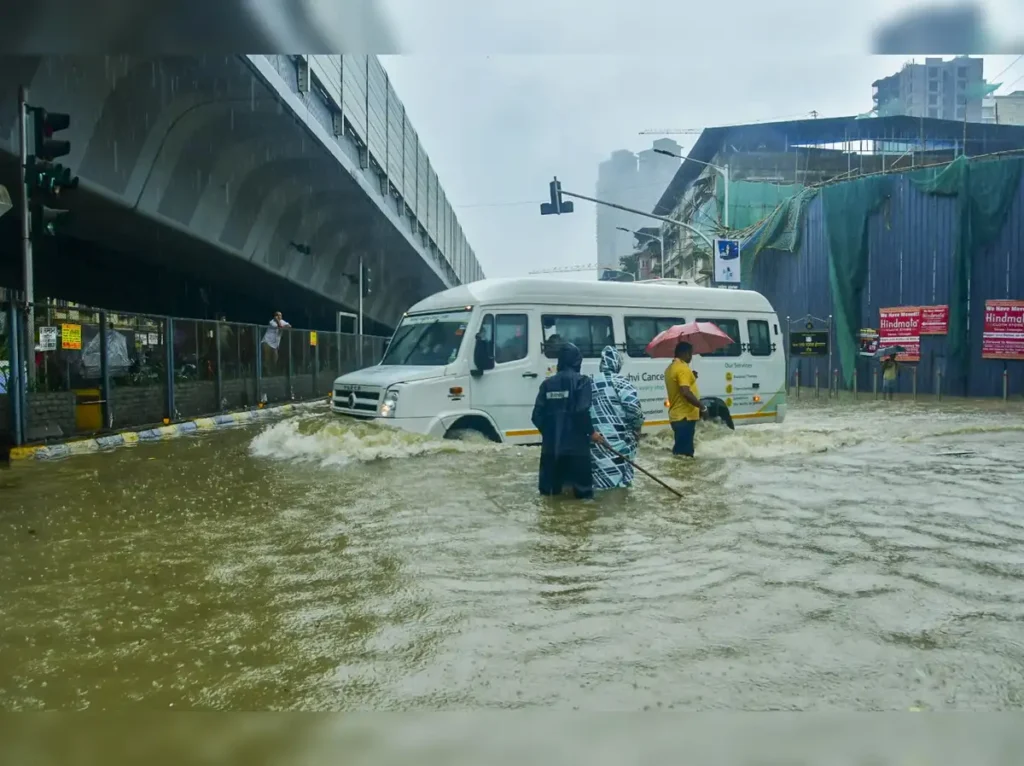
Current Rain Forecast in Mumbai (July 2025)
The India Meteorological Department (IMD) has issued an orange alert for Mumbai, Thane, and Palghar through July 25, 2025, forecasting heavy to very heavy rainfall (64.5–204.4 mm in 24 hours) with wind speeds of 40–50 km/h. The IMD’s Santacruz observatory recorded 108 mm of rain between July 21 and July 23, while Colaba recorded 40 mm, with suburbs like Bhandup registering 90.63 mm.
A further 150 mm of rainfall is expected over the next 24–36 hours, increasing risks of waterlogging and landslides in low-lying and hilly areas. The IMD predicts intermittent heavy showers with gusty winds through July 27, 2025, driven by a cyclonic circulation over south Gujarat and an active monsoon trough. Moderate to heavy rainfall is expected to continue, with isolated areas potentially receiving extremely heavy rain (>204.4 mm). Residents are advised to stay indoors and avoid flood-prone zones like Andheri, Kurla, and Ghatkopar.
Rain-Related Fatalities in Mumbai (January–July 2025)
The monsoon season, which intensified in Mumbai from May 2025, has resulted in several tragic incidents. Below is a breakdown of reported fatalities based on available information:
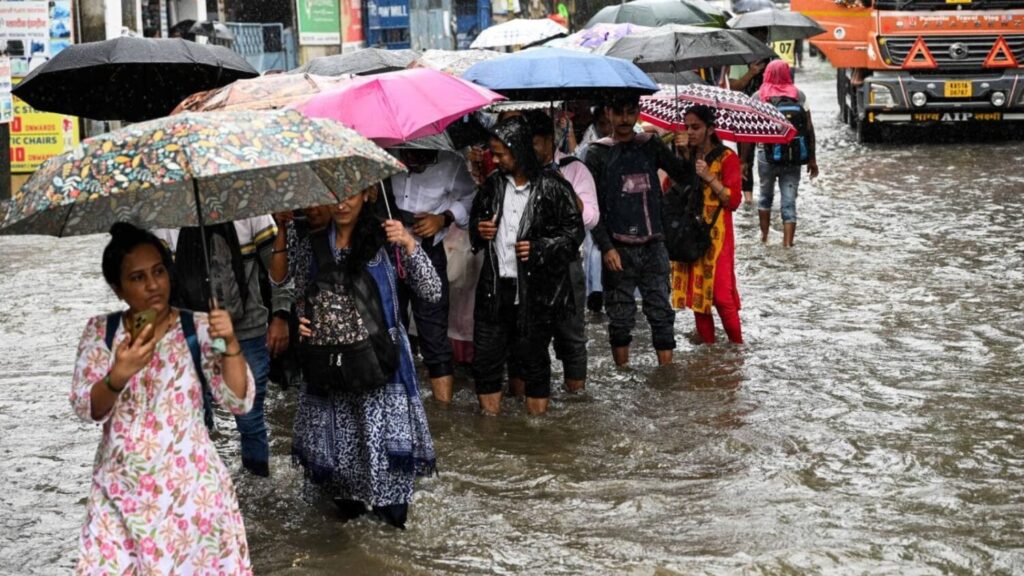
- May 2025:
- May 26–27, 2025: Heavy pre-monsoon showers, with Mumbai receiving 456.5 mm (Colaba) and 342 mm (Santacruz), caused widespread waterlogging and disruptions. No specific fatalities were reported on these days, but one person, Sairaj Pawar (24), was injured in a partial house collapse and admitted to St. George Hospital.
- Total for May: No confirmed fatalities directly attributed to rain-related incidents in Mumbai, though infrastructure damage and injuries were reported.
- June 2025:
- June 12, 2025: Eight deaths were recorded in Mumbai due to heavy rainfall:
- Six fatalities occurred in Qureshi Nagar, Kurla (East), when a hillock collapsed onto huts.
- A three-year-old boy died in a wall collapse.
- A 75-year-old man was killed by a falling tree.
- Total for June: 8 deaths in Mumbai, contributing to a broader Maharashtra toll of 18 deaths and 65 injuries from rain-related incidents since June 1, 2025
- June 12, 2025: Eight deaths were recorded in Mumbai due to heavy rainfall:
- July 2025:
- July 7, 2025: A 45-year-old woman, Vimal Gaikwad, drowned in an open drain in Andheri’s MIDC area amid severe waterlogging.
- July 21, 2025: A four-year-old boy was feared drowned after falling into an open drain in Nallasopara, Palghar district (part of the Mumbai Metropolitan Region, MMR). This incident is included due to its proximity to Mumbai and relevance to rain-related risks.
- July 23, 2025 (Bhandup Landslide): A landslide in Bhandup (West), Khindipada area, near Sai Niketan CHS, caused five houses to collapse after a 50-foot retaining wall gave way. No fatalities were reported, as the Brihanmumbai Municipal Corporation (BMC) preemptively evacuated residents.
- Total for July: 2 confirmed deaths (one in Mumbai, one in MMR), with the Bhandup landslide causing no fatalities due to proactive measures.
Total Fatalities (January–July 2025): 10 confirmed deaths in Mumbai and its immediate metropolitan region (8 in June, 2 in July). No rain-related fatalities were reported in Mumbai from January to April 2025, as the pre-monsoon period typically sees minimal rainfall.
Note: The data reflects reported incidents in Mumbai and the MMR. The broader Maharashtra tally of 18 deaths since June 1, 2025, includes incidents outside Mumbai (e.g., Raigad, Ratnagiri). Mumbai-specific fatalities are lower than the state total.
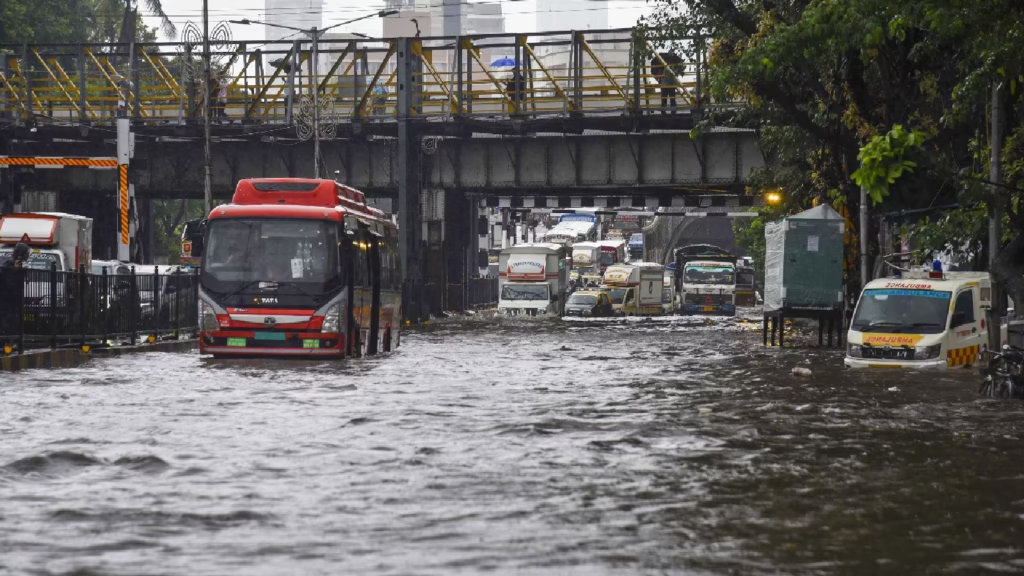
Economic Cost of Rain Disasters in Mumbai
Rain-related disasters, including floods and landslides, impose significant economic costs on Mumbai annually, affecting infrastructure, businesses, and livelihoods. While precise 2025 data is limited, historical and recent estimates provide context:
- Historical Context: A 2021 report estimated that Mumbai’s annual monsoon-related damages, including property loss, business disruptions, and infrastructure repairs, cost the city approximately ₹5,000–₹10,000 crore (USD 600 million–1.2 billion). Flooding in 2005, one of Mumbai’s worst, caused damages worth ₹8,000 crore.
- 2025 Estimates: The June–July 2025 floods and landslides disrupted air and rail travel, with over 430 flight delays and 49 cancellations reported on June 16, 2025, alone, costing airlines and passengers an estimated ₹50–100 crore. Waterlogging in commercial hubs like Bandra Kurla Complex (BKC) and Lower Parel led to business losses of ₹200–300 crore due to reduced productivity and damaged inventory. The Bhandup landslide, while not fatal, damaged five houses and local infrastructure, with repair costs estimated at ₹5–10 crore.
- Indirect Costs: Traffic disruptions on major highways (Eastern and Western Express Highways) and suburban train delays reduced economic output, with daily losses in productivity estimated at ₹100 crore during peak flooding. Small businesses, such as shops in Hindmata, faced losses of ₹10–50 lakh per establishment due to waterlogging.
- Total Estimated Cost for 2025: Based on reported incidents and historical trends, rain-related damages in Mumbai for 2025 are projected to range between ₹3,000–₹5,000 crore, with final figures depending on the monsoon’s severity and further incidents

Government Agencies Responsible and Actions Taken to Minimize Rain Disasters
Primary Agency: The Brihanmumbai Municipal Corporation (BMC) is the lead agency for disaster management in Mumbai, supported by the National Disaster Response Force (NDRF), Maharashtra State Disaster Management Authority (SDMA), and the India Meteorological Department (IMD) for forecasting. Other stakeholders include Mumbai Police, Mumbai Fire Brigade, Western and Central Railways, and the Navi Mumbai Municipal Corporation.
Actions Taken to Minimize Rain Disasters:
- Pre-Monsoon Preparedness:
- Drainage Upgrades: The BMC has desilted 70% of Mumbai’s 2,000 km of storm drains and installed 400 dewatering pumps in flood-prone areas like Hindmata, Kurla, and Andheri to reduce waterlogging.
- Underground Reservoirs: Since 2021, the BMC has constructed underground water storage tanks in flood-prone areas like Hindmata, which successfully mitigated flooding in 2025 by storing excess rainwater.
- Pumping Stations: New pumping stations at Prabhadevi and Worli have reduced flood severity in low-lying areas.
- Real-Time Monitoring and Alerts:
- The IMD and BMC collaborate with IITM and MoES to provide live rainfall data via the “Mumbai Weather Live” app, covering 139 sites across the city. This app includes radar-derived precipitation data and satellite imagery to improve preparedness.
- The BMC’s Disaster Management Department issues alerts via SMS and social media, urging residents to avoid flooded areas.
- Emergency Response:
- The NDRF deployed teams to Bhandup, Thane, Kurla, and Andheri following the July 23 landslide and earlier flooding incidents. The Mumbai Fire Brigade and Police assisted in evacuations and debris clearance.
- Preemptive evacuations in Bhandup prevented casualties during the landslide, showcasing effective coordination by the BMC.
- Infrastructure Resilience:
- The BMC is auditing 291 landslide-prone areas, with a focus on the S Ward (Bhandup, Vikhroli), which accounts for over 50% of these zones. Retaining walls are being strengthened in hilly areas.
- The Maharashtra government, led by Chief Minister Eknath Shinde, has allocated additional funds through the National Disaster Management Authority (NDMA) to enhance flood mitigation infrastructure.
- Citizen Engagement:
- Crowdsourced data from social media and public webcams have been integrated into flood monitoring systems, improving real-time hotspot identification. The Random Forest algorithm enhances satellite rainfall estimates, aiding BMC’s forecasting accuracy.
Despite these efforts, challenges remain, including inadequate drainage capacity in densely populated areas and delays in infrastructure projects like the Mumbai Coastal Road, which could further alleviate flooding.
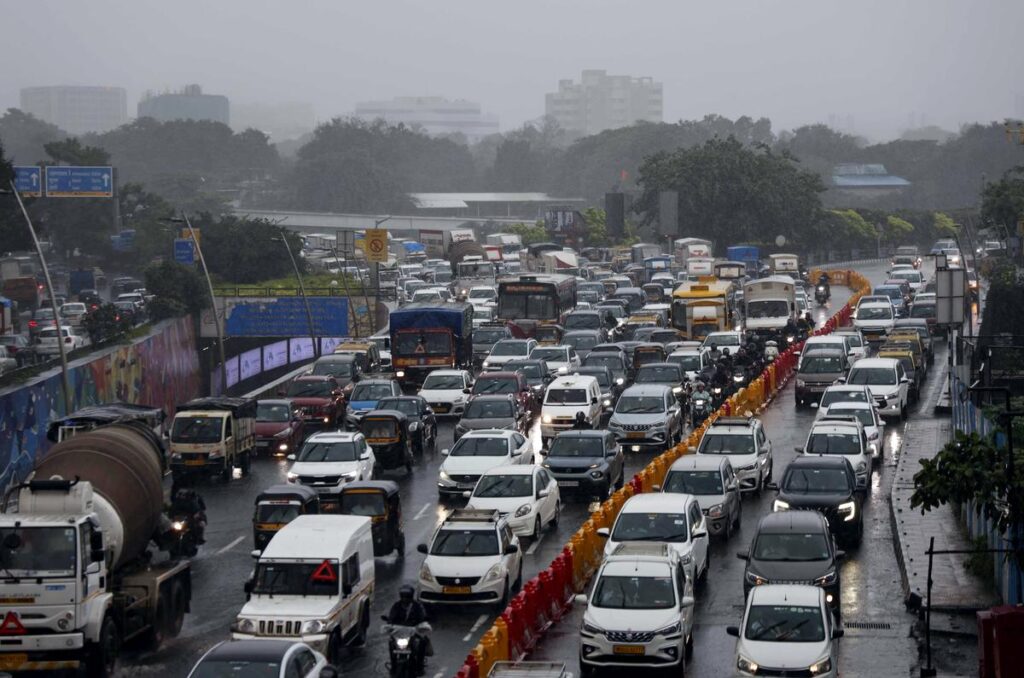
Total Population of Mumbai
As of 2025, Mumbai’s population is approximately 12.5 million (1.25 crore), based on projections from the 2011 Census (12.44 million) and an annual growth rate of 0.5–1%. This figure includes the floating population of daily commuters from neighboring areas like Thane and Navi Mumbai. Mumbai is India’s financial capital and one of the world’s most densely populated cities, with over 20,000 people per square kilometer in some areas.
Population Division Based on Income and Net Wealth
Mumbai’s population can be segmented by income and net wealth, reflecting its stark economic disparities. Data is drawn from studies by the Reserve Bank of India (RBI), Knight Frank Wealth Report, and local economic surveys up to 2025:
- Income Distribution:
- Low-Income Group (<₹5 lakh/year): ~60% (7.5 million)
- Includes daily wage earners, slum residents, and informal sector workers (e.g., street vendors, domestic workers).
- Average monthly income: ₹10,000–₹20,000.
- Predominantly resides in slums (41% of Mumbai’s population, ~5.1 million) or chawls.
- Middle-Income Group (₹5–20 lakh/year): ~30% (3.75 million)
- Includes salaried professionals, small business owners, and mid-level corporate employees.
- Average monthly income: ₹40,000–₹1,50,000.
- Resides in apartments or redeveloped housing in suburbs like Andheri, Borivali, and Thane.
- High-Income Group (>₹20 lakh/year): ~10% (1.25 million)
- Includes corporate executives, entrepreneurs, and affluent professionals in finance, IT, and entertainment.
- Average monthly income: ₹2,00,000+.
- Concentrated in upscale areas like South Mumbai, Bandra, and BKC.
- Low-Income Group (<₹5 lakh/year): ~60% (7.5 million)
- Net Wealth Distribution:
- Low Wealth (<₹1 crore): ~85% (10.6 million)
- Limited savings, primarily in bank deposits or small investments.
- Includes low- and middle-income groups with minimal asset ownership.
- Middle Wealth (₹1–10 crore): ~12% (1.5 million)
- Owns residential properties, mutual funds, or small business assets.
- Predominantly middle- and upper-middle-class families.
- High Wealth (>₹10 crore): ~3% (0.375 million)
- Ultra-high-net-worth individuals (UHNIs) and high-net-worth individuals (HNIs), owning luxury properties, stocks, and businesses.
- South Mumbai (e.g., Malabar Hill, Marine Drive) hosts India’s richest, with 70,000 UHNIs in Mumbai as per the 2025 Knight Frank Wealth Report.
- Low Wealth (<₹1 crore): ~85% (10.6 million)
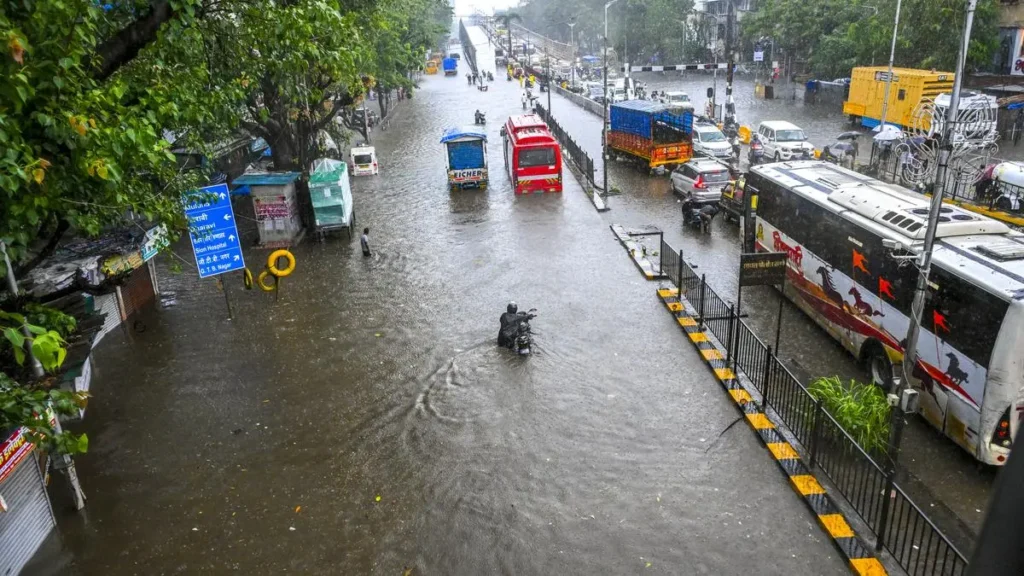
Home Ownership vs. Rental Statistics
Mumbai’s housing market is characterized by high property prices, leading to a significant rental population:
- Home Ownership: ~59% (7.375 million)
- Approximately 59% of Mumbai’s population owns their homes, including those in slums with informal ownership (e.g., pagdi system or redeveloped SRA flats).
- Ownership is higher in suburbs (e.g., Borivali, Thane) where apartments are more affordable (₹1–3 crore) compared to South Mumbai (₹5–50 crore).
- Slum rehabilitation schemes under the Slum Rehabilitation Authority (SRA) have increased ownership among low-income groups, with 2.5 lakh families rehoused by 2025.
- Rental Population: ~41% (5.125 million)
- Includes middle- and low-income groups renting in chawls, apartments, or shared accommodations.
- Average monthly rent: ₹15,000 (1BHK in suburbs) to ₹2,00,000 (luxury apartments in South Mumbai).
- High rental demand in commercial hubs like BKC, Lower Parel, and Andheri due to proximity to workplaces.
Data Source: Housing.com, 99acres, and BMC housing surveys (2025).
Secure Your Future with Premium Plots in Bengaluru!
Discover the perfect opportunity to invest in Bengaluru’s booming real estate market with YTC Ventures B2B Channel Partners.
Our BDA- and BMRDA-approved plots are strategically located in high-growth areas like Sarjapur Road, Devanahalli, Yelahanka, and Chandapura, offering unmatched potential for building your dream home or securing high returns. With prices starting at just ₹12 lakh, flexible EMI plans by July 31, 2025, now is the time to act! Enjoy modern amenities, clear titles, and proximity to IT hubs, metro stations, and airports.
Fill out the form below to schedule a free site visit or get personalized assistance from our team. Don’t miss out on Bengaluru’s real estate revolution!
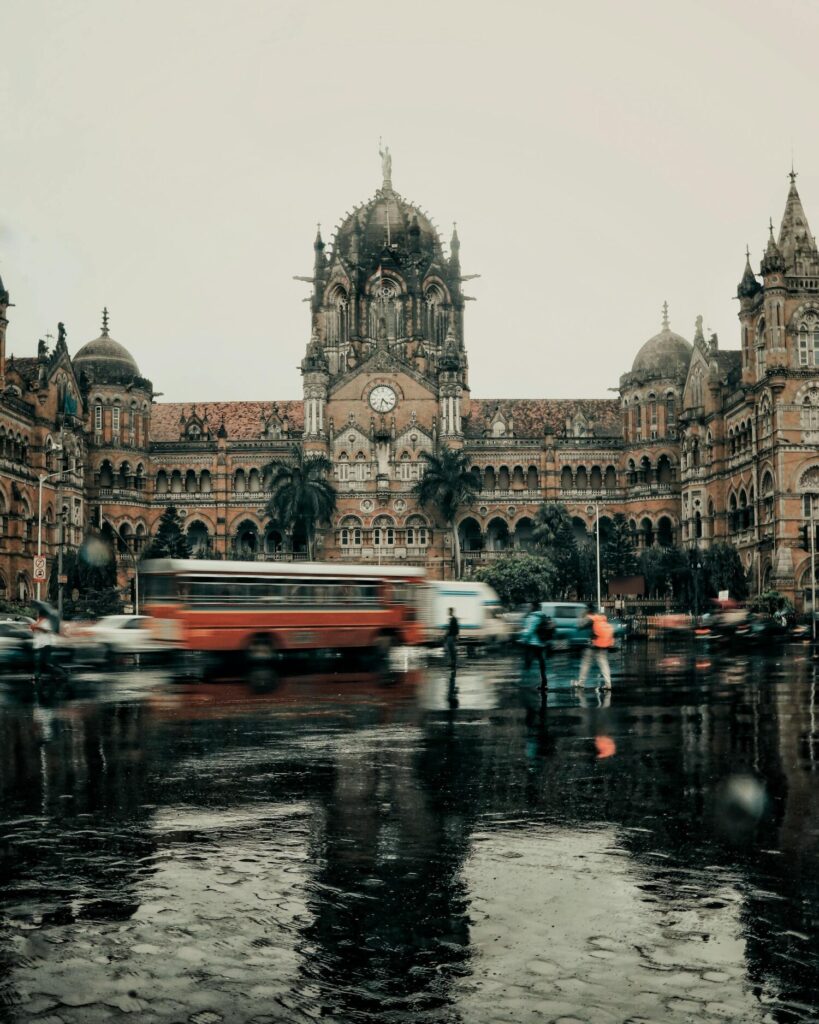

Comments